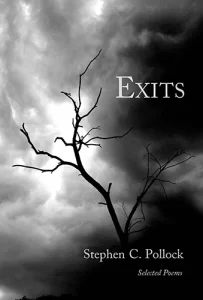Post Road – 2011
Number 21
2011
Biannual
John Baum
Post Road offered me surprises that I don’t believe I have actually seen in other magazines. For instance, during my first official flip through, my thumb stopped on a page where Micah Nathan reviews The Stories of John Cheever, claiming that, although not a “titan like Hemingway or Faulkner . . . there’s room in the pantheon for gods of all types. We reserve a temple for him.” I can’t recall how many reviews (celebrations?) of Cheever I have read in modern literary magazines—because I don’t believe that I ever have. And then on the page opposite began Asad Raza’s review of the 1983 Lizzie Borden movie Born in Flames, a movie that, according to the author: “makes most New York movies seem like sentimental fawning.” These two pieces represent the eclectic, brilliant choices the editors have made in putting the magazine together, which I think is its greatest strength. It caters to many different tastes, and, according to the magazine’s website, each submission is read by three different people before accepting or rejecting it—thus ensuring a strong collection with each biannual issue.
Post Road offered me surprises that I don’t believe I have actually seen in other magazines. For instance, during my first official flip through, my thumb stopped on a page where Micah Nathan reviews The Stories of John Cheever, claiming that, although not a “titan like Hemingway or Faulkner . . . there’s room in the pantheon for gods of all types. We reserve a temple for him.” I can’t recall how many reviews (celebrations?) of Cheever I have read in modern literary magazines—because I don’t believe that I ever have. And then on the page opposite began Asad Raza’s review of the 1983 Lizzie Borden movie Born in Flames, a movie that, according to the author: “makes most New York movies seem like sentimental fawning.” These two pieces represent the eclectic, brilliant choices the editors have made in putting the magazine together, which I think is its greatest strength. It caters to many different tastes, and, according to the magazine’s website, each submission is read by three different people before accepting or rejecting it—thus ensuring a strong collection with each biannual issue.
In all, there are nine “recommendation” pieces that review, remember, and revere writers from all over the literature world: Samuel Becket, John Edgar Wideman, Cynthia Morrison, and Denton Welch, among others. It is refreshing to read these, as they are not crammed into the final pages, and they are well written with a wide range of subjects and angles.
The three featured fiction pieces are as varied as they are enjoyable. Caren Beilen’s “Meet Me at the Hedge, My Love” and Michael Martone’s “Chili 4-way” represent a less straight forward view of relationships than James Scott’s “How We Looked”—again, another refreshing choice.
The poetry selection is terrific as well, and two of the singular choices are the pieces by Martin Ott and John F. Buckley, co-authors whose contributor’s notes refer to their collaborative work as “ongoing games of poetic volleyball.” Also included are poems by Norman Finkelstein, Elizabeth Powell (Her second selection opens with the line, “I married the apocalypse”—brilliant.), and Weston Cutter (One of his pieces, an amalgamation of adolescence and jazz, absolutely sings!).
Along with poetry, fiction and nonfiction, the magazine boasts fifteen paintings by Knox Martin, along with a “guest folio” section which includes four prose pieces chosen by an editor—exquisite selections, all four.
The magazine covers an array of tastes and aesthetics, and even though it has only been around a little over a decade, it reads like a silverback journal that proved itself many years ago.
[www.postroadmag.com/]




